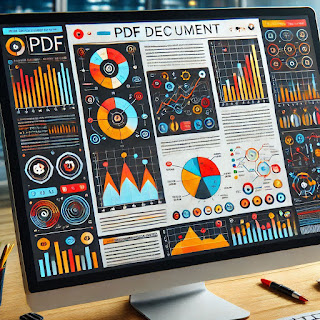How to Convert PDF to JPEG
Converting PDF files into JPEG images is a handy skill for various purposes. Whether you're looking to extract high-quality visuals, make your content more accessible, or share your work online, knowing how to convert PDF to JPEG can make your workflow more efficient. This guide will take you through the process, offer tips on maintaining image quality, and explain why this conversion is essential.
Before we dive into the conversion steps, let's explore some common reasons for converting a PDF to JPEG:
Extracting Images: Sometimes, you need high-quality visuals from a PDF. Converting the entire page to a JPEG captures every element, including images, fonts, and layout.
Sharing on Social Media: PDFs, though widely used, aren’t the most accessible for sharing on social platforms. JPEGs are much easier to share across various networks and devices.
Presentation and Display: JPEGs work well in presentations and digital displays, offering greater flexibility for embedding in websites or slide decks.
Editing and Printing: Want to print a specific page or crop sections? Converting to JPEG lets you do that without compromising the original quality.
Step-by-Step Guide to Convert PDF to JPEG
There are several ways to convert a PDF to a JPEG, but the easiest method is using an online tool. You won’t need to install software, and the conversion can be done in a few simple steps.
Step 1: Choose a Reliable PDF to JPEG Converter
The first step is selecting a trustworthy online converter. Some popular options include:
- iLovePDF
- SmallPDF
- PDF2Go
For this guide, we’ll use iLovePDF, a user-friendly tool that makes the conversion process quick and simple.
Step 2: Upload Your PDF File
Once you've chosen your converter, follow these steps to upload your PDF:
- Visit the PDF to JPEG converter tool of your choice.
- Click the “Select PDF file” button (or similar).
- Browse your computer to select the PDF you wish to convert.
- Click "Open" to upload the file.
Step 3: Select Conversion Settings
After uploading, you will be asked to choose your conversion settings. There are typically two options:
- Convert the Entire PDF to JPEG: This option converts each page of the PDF into a separate JPEG image.
- Extract Images Only: This option extracts only the images from the PDF, converting them into JPEG format.
Choose the option that fits your needs. If you want an entire page as an image, go with the full-page conversion.
Step 4: Start the Conversion
After selecting the appropriate settings, click the "Convert to JPEG" button to begin the process. The conversion should only take a few seconds, depending on the size of the file.
Step 5: Download Your JPEG Images
Once the conversion is complete, you’ll be provided with a download link or button. You can download the images individually or as a ZIP file (if there are multiple pages).
Click "Download JPEG images" to save them to your computer.
Tips for Maintaining Image Quality
JPEG is a compressed format, so it’s important to consider image quality when converting. Here are a few tips to ensure the best results:
Choose High Resolution: Select the highest resolution possible (300 DPI or higher) for the best image quality.
Avoid Excessive Compression: Some tools apply compression during conversion, which can reduce quality. Always choose minimal compression when possible.
Check the Source PDF: The quality of the final JPEG images depends on the quality of the original PDF. If the PDF has low-resolution images, the output will be of similar quality.
Use Professional Software for Bulk Conversions: For large-scale conversions, software like Adobe Acrobat Pro or Photoshop provides more control over output quality.
Optimize Images Post-Conversion: After conversion, you can further enhance the image quality by adjusting brightness, contrast, and sharpness using an image editor.
Common Problems and Solutions
While converting PDFs to JPEGs is usually straightforward, there are a few common issues:
Loss of Formatting: Occasionally, the original layout may not transfer correctly. To avoid this, select the highest resolution setting available.
Low-Quality Images: If the image is pixelated or blurry, it's likely due to low resolution or high compression. Always aim for higher resolution and minimal compression during conversion.
Multiple Pages: If your PDF has many pages, it can be cumbersome to download each page individually. Many tools allow you to download the entire batch as a ZIP file, making it easier to manage.




